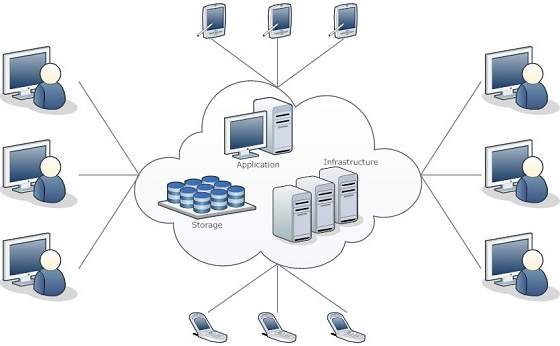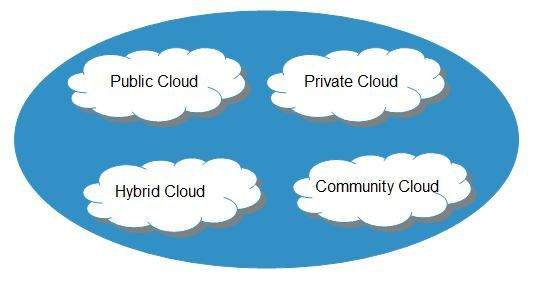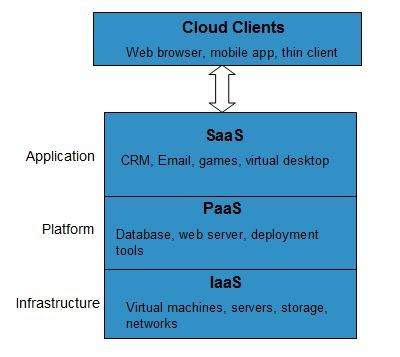Cloud Computing provides us means of accessing the applications as utilities over the Internet. It allows us to create, configure, and customize the applications online.
What is Cloud?
The term Cloud refers to a Network or Internet. In other words, we can say that Cloud is something, which is present at remote location. Cloud can provide services over public and private networks, i.e., WAN, LAN or VPN.
Applications such as e-mail, web conferencing, customer relationship management (CRM) execute on cloud.
What is Cloud Computing?
Cloud Computing refers to manipulating, configuring, and accessing the hardware and software resources remotely. It offers online data storage, infrastructure, and application.

Cloud computing offers platform independency, as the software is not required to be installed locally on the PC. Hence, the Cloud Computing is making our business applications mobile and collaborative.
Basic Concepts
There are certain services and models working behind the scene making the cloud computing feasible and accessible to end users. Following are the working models for cloud computing:
- Deployment Models
- Service Models
Deployment Models
Deployment models define the type of access to the cloud, i.e., how the cloud is located? Cloud can have any of the four types of access: Public, Private, Hybrid, and Community.

Public Cloud
The public cloud allows systems and services to be easily accessible to the general public. Public cloud may be less secure because of its openness.
Private Cloud
The private cloud allows systems and services to be accessible within an organization. It is more secured because of its private nature.
Community Cloud
The community cloud allows systems and services to be accessible by a group of organizations.
Hybrid Cloud
The hybrid cloud is a mixture of public and private cloud, in which the critical activities are performed using private cloud while the non-critical activities are performed using public cloud.
Service Models
Cloud computing is based on service models. These are categorized into three basic service models which are -
- Infrastructure-as–a-Service (IaaS)
- Platform-as-a-Service (PaaS)
- Software-as-a-Service (SaaS)
Anything-as-a-Service (XaaS) is yet another service model, which includes Network-as-a-Service, Business-as-a-Service, Identity-as-a-Service, Database-as-a-Service or Strategy-as-a-Service.
The Infrastructure-as-a-Service (IaaS) is the most basic level of service. Each of the service models inherit the security and management mechanism from the underlying model, as shown in the following diagram:

Infrastructure-as-a-Service (IaaS)
IaaS provides access to fundamental resources such as physical machines, virtual machines, virtual storage, etc.
Platform-as-a-Service (PaaS)
PaaS provides the runtime environment for applications, development and deployment tools, etc.
Software-as-a-Service (SaaS)
SaaS model allows to use software applications as a service to end-users.

Comments
Post a Comment